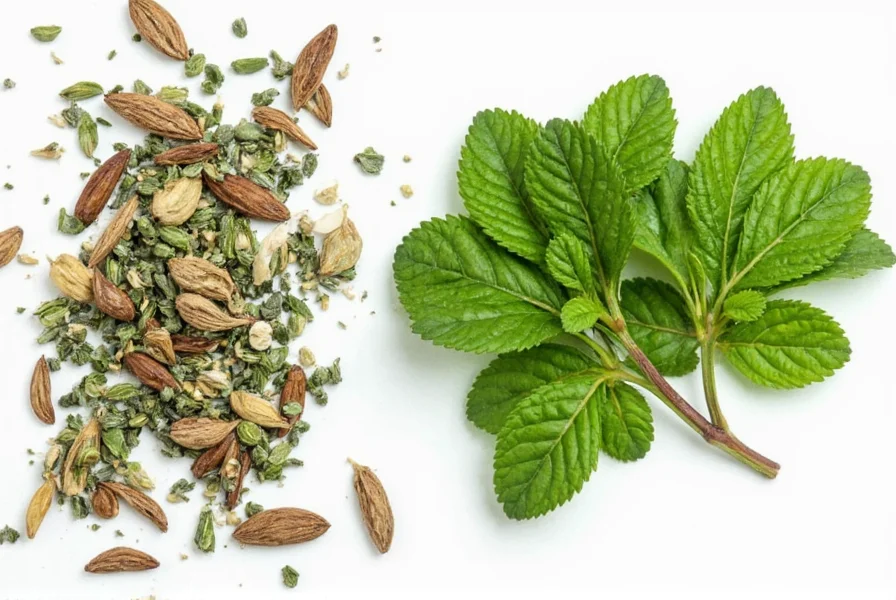The standard dry herb to fresh ratio is 1:3, meaning 1 teaspoon of dried herbs equals 1 tablespoon of fresh herbs. This precise conversion ensures optimal flavor in every dish while avoiding common seasoning mistakes.
| Herb | Standard Substitution | Best Use Case |
|---|---|---|
| Basil | 1 tsp dried = 1 tbsp fresh | Fresh for Italian dishes, dried for sauces |
| Oregano | 1 tsp dried = 1 tbsp fresh | Dried preferred for tomato-based sauces |
| Rosemary | 1/2 tsp dried = 1 tsp fresh | Use sparingly when dried due to high potency |
| Cilantro | Not recommended as substitute | Fresh only for salsas and Asian cuisine |
Whether you're a home cook or professional chef, understanding this ratio is critical for balancing flavors. Dried herbs concentrate essential oils during dehydration, making them 3x stronger than fresh versions. This guide covers expert techniques, common mistakes, and science-backed substitution rules for perfect results every time.
Understanding Fresh and Dried Herbs
Fresh herbs are harvested young and deliver vibrant, bright flavors ideal for finishing dishes. Dried herbs undergo dehydration that concentrates oils, creating more intense but less aromatic flavors. The key difference lies in their water content: fresh herbs are 80-90% water, while dried herbs retain only 5-10%, explaining the 1:3 substitution ratio.

When to Use Dried vs. Fresh Herbs
Dried Herbs Best For:
- Slow-cooked dishes (stews, braises, soups)
- Spice blends and rubs
- Baked goods like focaccia and breads
Fresh Herbs Best For:
- Garnishes and finishing touches
- Salsas, pesto, and chimichurri
- Quick-cooked dishes like stir-fries
Pro Cooking Techniques
Dried Herbs:
- Toast in dry pan before use to release oils
- Add early in cooking for slow-cooked dishes
- Store in airtight containers away from light
Fresh Herbs:
- Chop immediately before use
- Add in last 1-2 minutes of cooking
- Store stems in water like fresh flowers
| Dish Type | Recommended Herb Mix |
|---|---|
| Tomato Sauce | Dried oregano + fresh basil at end |
| Roasted Chicken | Dried thyme + fresh parsley garnish |
| Grilled Vegetables | Dried rosemary + fresh mint dressing |
Frequently Asked Questions
What is the exact dry herb to fresh ratio?
The standard ratio is 1 part dried to 3 parts fresh (1 tsp dried = 1 tbsp fresh). This accounts for the 3x concentration of essential oils in dried herbs due to water removal during dehydration.
Why do some herbs need different ratios?
Herb potency varies by type. Rosemary is exceptionally strong when dried (1/2 tsp dried = 1 tsp fresh), while cilantro loses most flavor when dried and shouldn't be substituted. Always check specific herb guidelines.
How long do dried herbs stay potent?
Properly stored dried herbs maintain peak potency for 1-2 years. Store in airtight containers away from heat, light, and moisture. Mark purchase dates on containers to track freshness.
Conclusion
Mastering the dry herb to fresh ratio transforms everyday cooking into professional results. By understanding the science behind herb concentration and applying these precise substitution rules, you'll consistently achieve balanced flavors while avoiding over-seasoning. Remember: when in doubt, start with less dried herb and adjust to taste.










 浙公网安备
33010002000092号
浙公网安备
33010002000092号 浙B2-20120091-4
浙B2-20120091-4